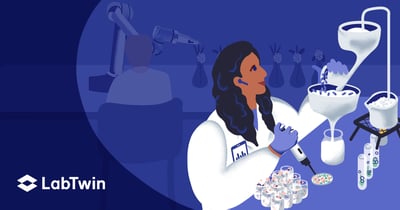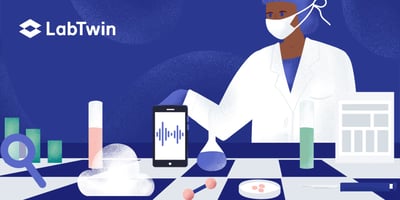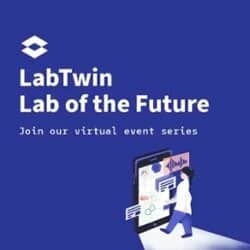My PhD research focused on identifying the impact of industrial chemicals on the developing embryo. Given the toxic nature of these chemicals, all lab work was carried out under strict GxP conditions, including the use of PPE and sterile technique. This led to an inevitable bottleneck – interrupting work to take detailed notes. Every time I paused to note something down, I had to change to a fresh pair of gloves and re-sterilize the workspace. Since detailed notes are the backbone of reproducible science, these interruptions were unavoidable.
Voice-activated lab informatics tools could help alleviate many of these common challenges. In addition to minimizing disruptions, a voice-activated lab assistant can record experimental details that are often ignored or forgotten. As any scientist knows, these details are often what determine the reproducibility of an experiment. My own research used a mixed models approach, employing cell culture and zebrafish embryos. LabTwin would be readily applicable to both these areas, helping increase throughput and speed.
To determine the toxicity of a chemical, I dosed cells cultured in 96-well plates with various concentrations and recorded cell numbers and morphology using a microscope. To minimize the time cells spent outside the controlled environment of the incubator, I would recruit another lab member to note down my observations as I dictated them. Though effective, this method took away valuable time that my coworker could have spent on something more productive. With LabTwin, I could have operated by myself, both working and recording information at the same time using voice commands, thus freeing up my coworker through lab automation.
I used zebrafish embryos to build upon the cell culture findings and to identify organ systems that were impacted by toxicants. My specific project used confocal microscopy to image the developing pancreas. These images then had to be analyzed on the system, stopping between images to note down measurements from the previous image. Here again, LabTwin could substantially reduce the time taken to analyze and record data, optimizing workflow.
Moreover, using LabTwin adds an extra checkpoint for data and experimental notes, helping achieve distributed quality control and minimizing errors. Digitized experimental notes and protocols can serve as a safer long-term alternative to paper lab notebooks, improving data fidelity and helping overall digital lab transformation efforts.











